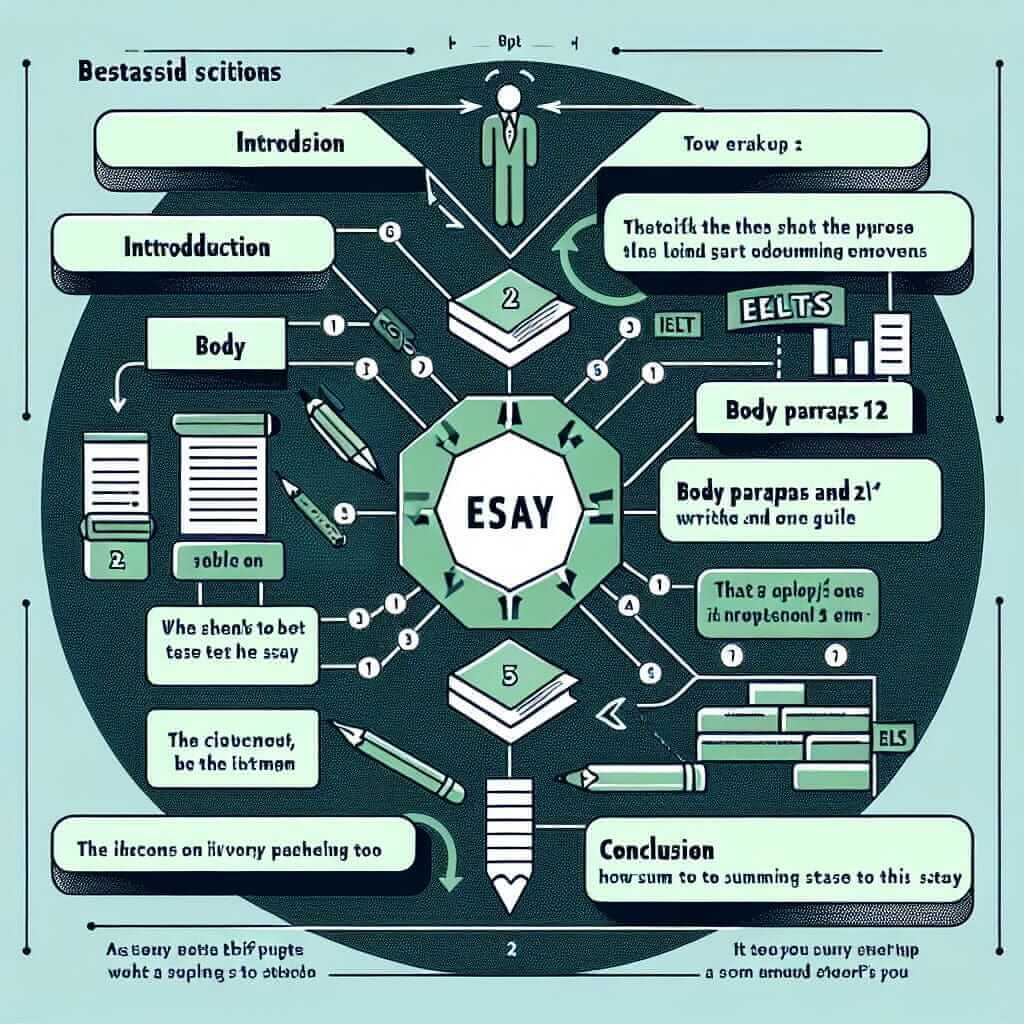The Importance of Understanding the IELTS Writing Structure
Achieving a high score on the IELTS Writing test requires more than just strong language skills; it demands a deep understanding of the test format and its specific requirements. One key aspect often overlooked is recognizing the distinct parts within each writing task. Knowing these parts and how they relate to the overall task is crucial for effective time management, idea organization, and ultimately, achieving your desired band score.
IELTS Writing Task 1: Unveiling the Structure
While Task 1 differs between the Academic and General Training modules, both share a fundamental structure that candidates need to grasp.
Academic Writing Task 1:
This task requires analyzing and summarizing visual data presented in various forms such as graphs, charts, diagrams, or maps. The key is to present this information objectively and accurately within a 150-word minimum limit.
A typical structure includes:
- Introduction (Paraphrase): Briefly describe the type of visual and the main trend(s) it shows.
- Overview: Highlight the most significant features or trends without going into detail.
- Body Paragraph(s): Provide a more detailed analysis of the data, comparing and contrasting information where relevant. Each paragraph should focus on a specific aspect of the data.
General Training Writing Task 1:
Here, you’ll be writing a letter in response to a given situation. This could range from a formal letter requesting information to a personal letter thanking a friend. You need to write at least 150 words, maintaining the appropriate tone and style for the specified scenario.
A typical structure includes:
- Opening: Briefly state the purpose of your letter.
- Body Paragraph(s): Address each point mentioned in the prompt, providing relevant details and information.
- Closing: End with an appropriate closing statement and your name.
IELTS Writing Task 2: Dissecting the Essay Structure
Task 2, an essay writing task common to both Academic and General Training modules, carries more weight in your overall writing score. You are presented with an opinion, problem, or issue and asked to write a 250-word minimum essay in response.
A typical structure includes:
- Introduction: Introduce the topic and state your main thesis statement.
- Body Paragraph 1: Provide supporting arguments and evidence for your viewpoint.
- Body Paragraph 2: Present a counter-argument or a different perspective on the issue, then refute it.
- Conclusion: Summarize your main points and restate your thesis in a clear and concise manner.

Examples from Real IELTS Writing Tests:
Task 1 (Academic):
Visual: A line graph showing the population growth of three different cities between 1980 and 2010.
Possible Structure:
- Introduction: Paraphrase the type of graph and the period it covers.
- Overview: Highlight the city with the most significant population growth and any notable trends.
- Body Paragraph 1: Analyze the population growth of City A, providing specific data points from the graph.
- Body Paragraph 2: Compare and contrast the population growth of City B and City C, highlighting any similarities or differences.
Task 2 (General Training):
Prompt: Some people believe that children should be allowed to use mobile phones in school, while others disagree. Discuss both views and give your opinion.
Possible Structure:
- Introduction: Introduce the topic of mobile phone use in schools and clearly state your opinion.
- Body Paragraph 1: Discuss the arguments for allowing mobile phone use, such as educational benefits and emergency contact.
- Body Paragraph 2: Present the arguments against mobile phone use, such as distraction and potential misuse.
- Conclusion: Summarize both sides of the argument and restate your opinion with a concluding thought.
Tips for Achieving a High Score:
- Practice regularly: Familiarize yourself with the structure of each task and practice writing within the time limit.
- Plan your writing: Before you start writing, take a few minutes to brainstorm ideas and create a basic outline.
- Use a variety of vocabulary and grammatical structures: Showcase your language skills by using a wide range of vocabulary and complex sentence structures.
- Proofread carefully: Allow time to proofread your work for any grammar, spelling, or punctuation errors.
Understanding the structure of the IELTS Writing tasks is paramount to achieving your desired band score. By recognizing the distinct parts within each task and adhering to a logical and coherent structure, you can effectively convey your ideas, impress the examiner, and take a significant step towards achieving your language proficiency goals.